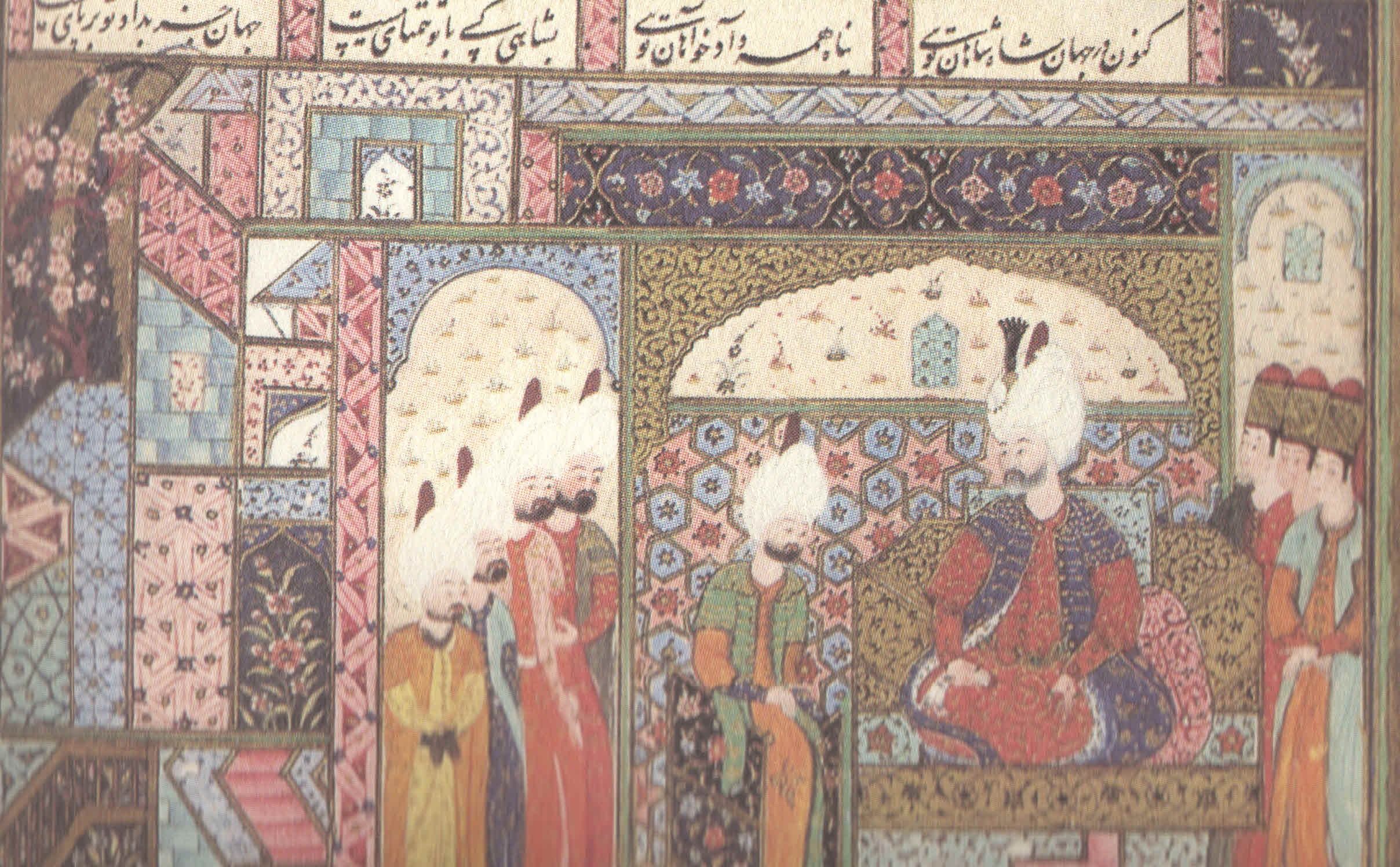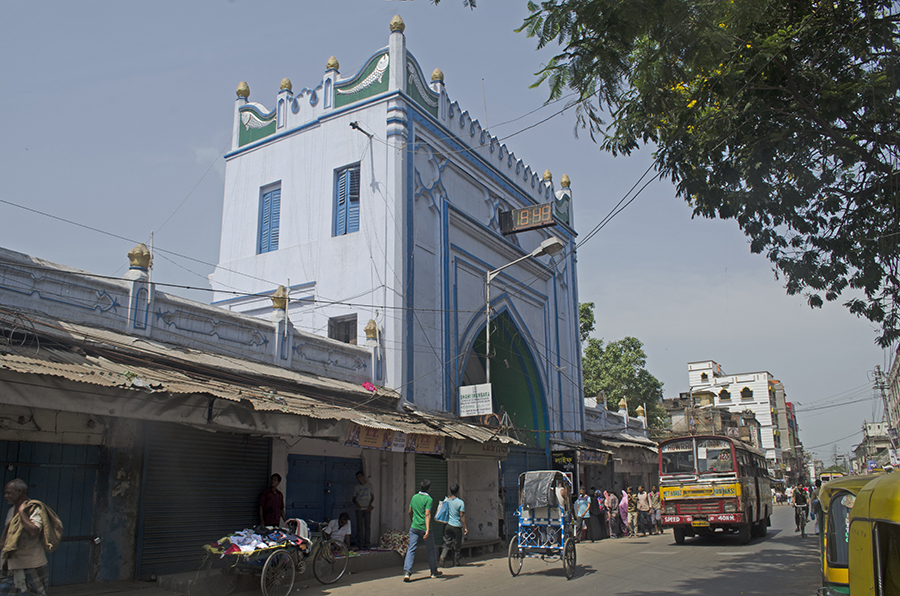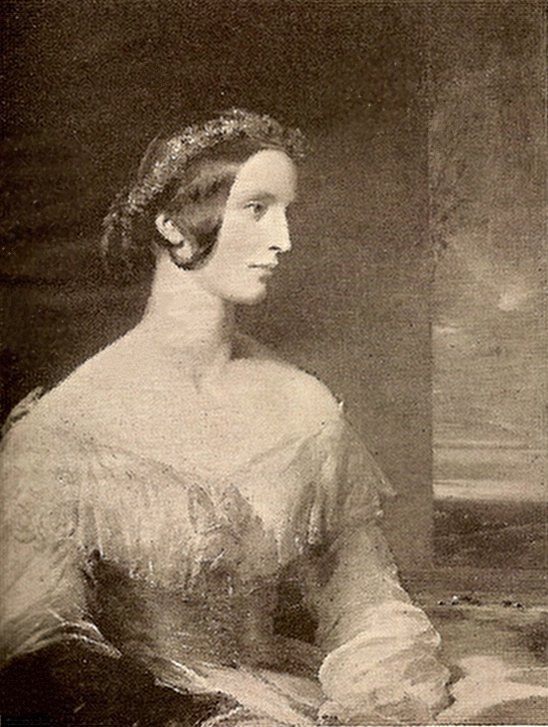|
Wazid Ali Shah
Mirza Wajid Ali Shah ( ur, ) (30 July 1822 – 1 September 1887) was the eleventh and last King of Awadh, holding the position for 9 years, from 13 February 1847 to 11 February 1856. Wajid Ali Shah's first wife was Alam Ara who was better known as Khas Mahal () because of her exquisite beauty. She was one of two Nikahi wives. His second wife, Muhammadi Khanum, better known as the Begum Hazrat Mahal, rose against the British East India Company during the Indian Rebellion of 1857 as the regent of Awadh. His kingdom, long protected by the East India Company (EIC) under treaty, was annexed by the EIC on 11 February 1856, two days before the ninth anniversary of his coronation. The Nawab was exiled to Garden Reach in Metiabruz, then a suburb of Kolkata, where he lived out the rest of his life on a generous pension. He was a poet, playwright, dancer and great patron of the arts. He is widely credited with the revival of Kathak as a major form of classical Indian dance. As a King ... [...More Info...] [...Related Items...] OR: [Wikipedia] [Google] [Baidu] |
Mirza (noble)
Mirza ( or ; fa, میرزا) is a name of Persian origin. It is used as a surname or prefix to identify patriarchal lineage. It is a historical royal and noble title, denoting the rank of a royal prince, high nobleman, distinguished military commander, or a scholar. Specifically, it was used as a title by (and today signifies patriarchal lineage to) the various Persian Empires, the Nogai Horde, Shirvanshahs and Circassians of the European Caucasus, as well as the Muslim Rajputs and mainly the Mughals / Moguls, both of the Indian Subcontinent. It was also a title bestowed upon members of the highest aristocracies in Tatar states, such as the Khanates of Kazan and Astrakhan. Etymology The original title ''Mīrzā'' or ''Merzāh'' is derived from the Persian term ''Amīrzādeh'' which literally means ''child of the Amīr'' or ''child of the ruler''. ''Amīrzādeh'' in turn consists of the Arabic title ''Amīr'' (English: ''Emir''), meaning "commander" and the Persian suf ... [...More Info...] [...Related Items...] OR: [Wikipedia] [Google] [Baidu] |
Metiabruz
Garden Reach is a neighbourhood of the city of Kolkata in West Bengal, India. It is situated in the south-western part of Kolkata near the bank of the Hooghly River.Garden Reach , Clickindia.com It is located to the north-east of , the west of and the north of Taratala and Behala. Localities within Garden Reach include Metiabruz, |
Lord Dalhousie
James Andrew Broun-Ramsay, 1st Marquess of Dalhousie (22 April 1812 – 19 December 1860), also known as Lord Dalhousie, styled Lord Ramsay until 1838 and known as The Earl of Dalhousie between 1838 and 1849, was a Scottish statesman and colonial administrator in British India. He served as Governor-General of India from 1848 to 1856. He established the foundations of the modern educational system in India by adding mass education in addition to elite higher education. He introduced passenger trains to the railways, the electric telegraph and uniform postage, which he described as the "three great engines of social improvement". He also founded the Public Works Department in India To his supporters he stands out as the far-sighted Governor-General who consolidated East India Company rule in India, laid the foundations of its later administration, and by his sound policy enabled his successors to stem the tide of rebellion. His period of rule in India directly preceded the ... [...More Info...] [...Related Items...] OR: [Wikipedia] [Google] [Baidu] |
Presidency Armies
The presidency armies were the armies of the three presidencies of the East India Company's rule in India, later the forces of the British Crown in India, composed primarily of Indian sepoys. The presidency armies were named after the presidencies: the Bengal Army, the Madras Army and the Bombay Army. Initially, only Europeans served as commissioned or non-commissioned officers. In time, Indian Army units were garrisoned from Peshawar in the north, to Sind in the west, and to Rangoon in the east. The army was engaged in the wars to extend British control in India (the Mysore, Maratha and Sikh wars) and beyond (the Burma, Afghan, First and Second Opium Wars, and the Expedition to Abyssinia). The presidency armies, like the presidencies themselves, belonged to the Company until the Indian Rebellion of 1857, when the Crown took over the Company and its three armies. In 1895, the three presidency armies were merged into a united Indian Army. Origin The origin of the British Ind ... [...More Info...] [...Related Items...] OR: [Wikipedia] [Google] [Baidu] |
William Sleeman
Major-general Sir William Henry Sleeman KCB (8 August 1788 – 10 February 1856) was a British soldier and administrator in British India. He is best known for his work from the 1830s in suppressing the organized criminal gangs known as Thuggee. He also discovered the holotype specimen of the sauropod dinosaur ''Titanosaurus indicus'' in Jabalpur in 1828. Early life and career Sleeman was born in Stratton, Cornwall, the fifth of eight children of Philip Sleeman, a yeoman and supervisor of excise of St Tudy. In 1809 Sleeman joined the Bengal Army and later served in the Nepal War between 1814 and 1816. He contracted malaria in 1813, symptoms of which occasionally reappeared for the remainder of his life (with sometimes debilitating intensity). In 1820 he was selected for civil employ, and became junior assistant to the Governor-General's agent in the Saugor and Nerbudda territories. In 1822 he was placed in charge of Narsinghpur District, and would later describe his two ... [...More Info...] [...Related Items...] OR: [Wikipedia] [Google] [Baidu] |
British Resident
A resident minister, or resident for short, is a government official required to take up permanent residence in another country. A representative of his government, he officially has diplomatic functions which are often seen as a form of indirect rule. A resident usually heads an administrative area called a residency. "Resident" may also refer to resident spy, the chief of an espionage operations base. Resident ministers This full style occurred commonly as a diplomatic rank for the head of a mission ranking just below envoy, usually reflecting the relatively low status of the states of origin and/or residency, or else difficult relations. On occasion, the resident minister's role could become extremely important, as when in 1806 the Bourbon king Ferdinand IV fled his Kingdom of Naples, and Lord William Bentinck, the British Resident, authored (1812) a new and relatively liberal constitution. Residents could also be posted to nations which had significant foreign influe ... [...More Info...] [...Related Items...] OR: [Wikipedia] [Google] [Baidu] |
Indian Subcontinent
The Indian subcontinent is a list of the physiographic regions of the world, physiographical region in United Nations geoscheme for Asia#Southern Asia, Southern Asia. It is situated on the Indian Plate, projecting southwards into the Indian Ocean from the Himalayas. Geopolitically, it includes the countries of Bangladesh, Bhutan, India, Maldives, Nepal, Pakistan, and Sri Lanka."Indian subcontinent". ''Oxford Dictionary of English, New Oxford Dictionary of English'' () New York: Oxford University Press, 2001; p. 929: "the part of Asia south of the Himalayas which forms a peninsula extending into the Indian Ocean, between the Arabian Sea and the Bay of Bengal. Historically forming the whole territory of Greater India, the region is now divided into three countries named Bangladesh, India and Pakistan." The terms ''Indian subcontinent'' and ''South Asia'' are often used interchangeably to denote the region, although the geopolitical term of South Asia frequently includes Afghanist ... [...More Info...] [...Related Items...] OR: [Wikipedia] [Google] [Baidu] |
Buffer State
A buffer state is a country geographically lying between two rival or potentially hostile great powers. Its existence can sometimes be thought to prevent conflict between them. A buffer state is sometimes a mutually agreed upon area lying between two greater powers, which is demilitarized in the sense of not hosting the military of either power (though it will usually have its own military forces). The invasion of a buffer state by one of the powers surrounding it will often result in war between the powers. Research shows that buffer states are significantly more likely to be conquered and occupied than are nonbuffer states. This is because "states that great powers have an interest in preserving—buffer states—are in fact in a high-risk group for death. Regional or great powers surrounding buffer states face a strategic imperative to take over buffer states: if these powers fail to act against the buffer, they fear that their opponent will take it over instead. By contrast, ... [...More Info...] [...Related Items...] OR: [Wikipedia] [Google] [Baidu] |
Bengal Army
The Bengal Army was the army of the Bengal Presidency, one of the three presidencies of British India within the British Empire. The presidency armies, like the presidencies themselves, belonged to the East India Company (EIC) until the Government of India Act 1858 (passed in the aftermath of the Indian Rebellion of 1857) transferred all three presidencies to the direct authority of the British Crown. In 1895 all three presidency armies were merged into the Indian Army. History Origins The Bengal Army originated with the establishment of a European Regiment in 1756. While the East India Company had previously maintained a small force of Dutch and Eurasian mercenaries in Bengal, this was destroyed when Calcutta was captured by the Nawab of Bengal on 30 June that year. Under East India Company In 1757 the first locally recruited unit of Bengal sepoys was created in the form of the ''Lal Paltan'' battalion. It was recruited from soldiers that had served in the Nawab's Arm ... [...More Info...] [...Related Items...] OR: [Wikipedia] [Google] [Baidu] |
Company Rule In India
Company rule in India (sometimes, Company ''Raj'', from hi, rāj, lit=rule) refers to the rule of the British East India Company on the Indian subcontinent. This is variously taken to have commenced in 1757, after the Battle of Plassey, when the Nawab of Bengal was defeated and replaced with another individual who had the support of the East India Company; or in 1765, when the Company was granted the ''diwani'', or the right to collect revenue, in Bengal and Bihar; or in 1773, when the Company abolished local rule (Nizamat) and established a capital in Calcutta, appointed its first Governor-General, Warren Hastings, and became directly involved in governance. The rule lasted until 1858, when, after the Indian Rebellion of 1857 and consequently of the Government of India Act 1858, the British government assumed the task of directly administering India in the new British Raj. Expansion and territory The English East India Company ("the Company") was founded in 1600, as ' ... [...More Info...] [...Related Items...] OR: [Wikipedia] [Google] [Baidu] |
Mughal Empire
The Mughal Empire was an early-modern empire that controlled much of South Asia between the 16th and 19th centuries. Quote: "Although the first two Timurid emperors and many of their noblemen were recent migrants to the subcontinent, the dynasty and the empire itself became indisputably Indian. The interests and futures of all concerned were in India, not in ancestral homelands in the Middle East or Central Asia. Furthermore, the Mughal empire emerged from the Indian historical experience. It was the end product of a millennium of Muslim conquest, colonization, and state-building in the Indian subcontinent." For some two hundred years, the empire stretched from the outer fringes of the Indus river basin in the west, northern Afghanistan in the northwest, and Kashmir in the north, to the highlands of present-day Assam and Bangladesh in the east, and the uplands of the Deccan Plateau in South India. Quote: "The realm so defined and governed was a vast territory of some , rang ... [...More Info...] [...Related Items...] OR: [Wikipedia] [Google] [Baidu] |
Awadh
Awadh (), known in British historical texts as Avadh or Oudh, is a region in the modern Indian state of Uttar Pradesh, which was before independence known as the United Provinces of Agra and Oudh. It is synonymous with the Kośāla region of Hindu, Bauddh, and Jain scriptures. Awadh is bounded by the Ganges Doab to the southwest, Rohilkhand to the northwest, Nepal to the north, and Bhojpur- Purvanchal to the east. Its inhabitants are referred to as Awadhis. It was established as one of the twelve original subahs (top-level imperial provinces) under 16th-century Mughal emperor Akbar and became a hereditary tributary polity around 1722, with Faizabad as its initial capital and Saadat Ali Khan as its first Subadar Nawab and progenitor of a dynasty of Nawabs of Awadh (often styled Nawab Wazir al-Mamalik). The traditional capital of Awadh is Lucknow, also the station of the British Resident, which now is the capital of Uttar Pradesh. Etymology The word Awadh is supposed ... [...More Info...] [...Related Items...] OR: [Wikipedia] [Google] [Baidu] |






.jpg)


